|
EQUINE CLICKER TRAINING..... using precision and positive reinforcement to teach horses and people |
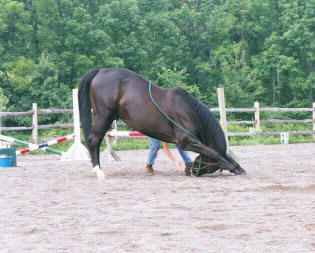
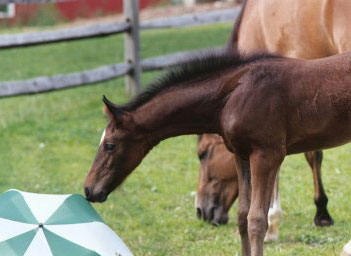
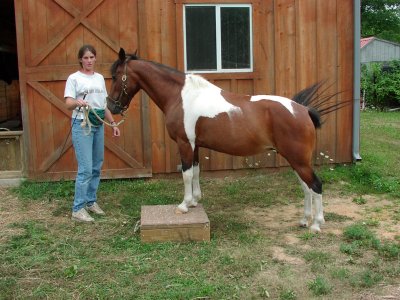
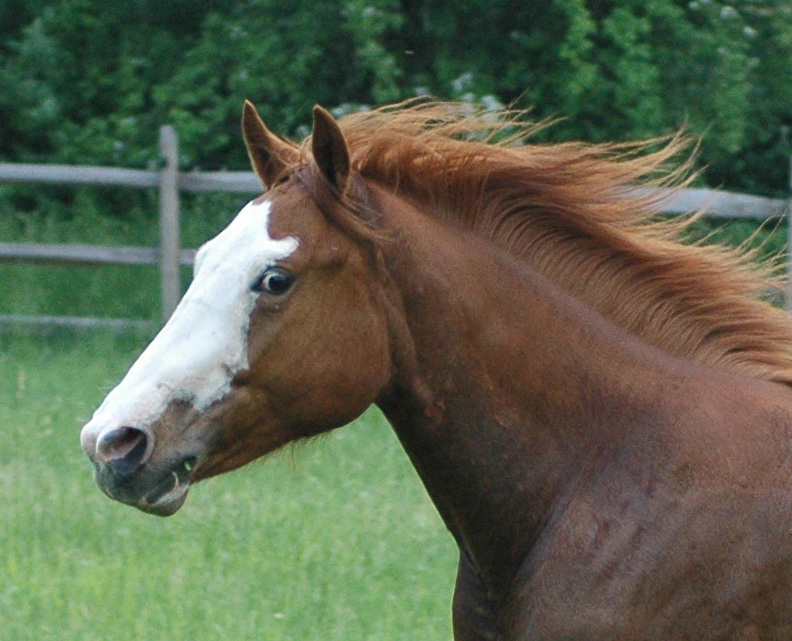
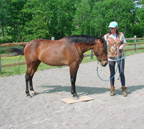
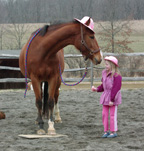
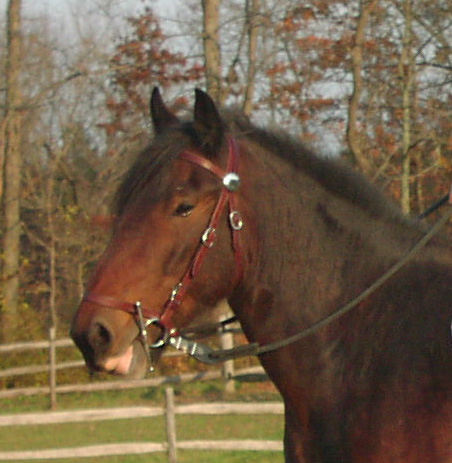
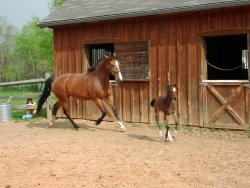 |
|
Inge Teblick on Extrinsic
and Intrinsic Reinforcers
One of the concerns that people
have is that using food (or other added reinforcers) somehow changes
the motivation of the horse to do behavior, and that this is
detrimental to the relationship between the horse and their trainer.
Similar questions are asked of anyone who uses positive
reinforcement training, whether it’s teachers giving out stickers or
zookeepers working with elephants.
This
is often called the debate between using intrinsic and extrinsic
reinforcers. Intrinsic reinforcers are reinforcers that come from
doing the activity itself. I ride because I enjoy riding. Extrinsic
reinforcers are reinforcers that are provided as an additional
incentive to do the activity. If I rode only to compete and get
ribbons, then I would be riding for an extrinsic reinforcer. Whether
or not there is any intrinsic reinforcement to an activity can vary
and is not fixed. It can depend upon a lot of factors and there will
be some days when it is sufficient to motivate you to do it, and
others when some extrinsic motivation helps. If you want to get me
to clean my house, adding an extrinsic reinforcer would work better
than relying on any intrinsic reinforcement. But if my house is
REALLY dirty, I might be motivated to clean it without additional
reinforcement.
The
question of intrinsic vs. extrinsic motivation is a hot topic in
business because employers want to understand how to motivate people
to work harder, be more responsible, be more creative, and perform
better in lots of other ways. There are a lot of questions about it.
Is it a function of how much they are paid? Is it more about how the
type of job? Is it about the people they work with? What makes one
person a super employee who eagerly takes on new challenges,
compared to another employee who does the bare minimum?
These same questions are relevant to horse trainers. What is the
best way to motivate our horses? At the Equine Clicker Conference in
2014, there were some video presentations and one was about
intrinsic and extrinsic reinforcers. The presentation was given by
Inge Teblick, who is a horse behavior consultant from the
Netherlands. She has published several books and is active in
teaching and promoting clicker training. Her website is
http://www.ingeteblick.be/en/welkom-2/.
This article
is based on notes I took while watching her video lecture which was
about how to apply the principles of game design (computer games) to
horse training. This is not the first time I have seen a comparison
between animal training and designing computer games. In a private
discussion at the Art and Science of Animal Training Conference
(ORCA), Joe Layng talked about how people who write games are
experts at shaping behavior. And Inge makes the same point. In order
to keep someone playing a game, you have to know what they need at
any given time in order to keep them playing long term. Here are
some highlights from her presentation in which she took a close look
at motivation and how extrinsic and intrinsic motivation work
together.
Inge lists
the 4 x-factors of “fun” as:
Autonomy:
being able to make choices
If I think
of the activities that my horse Rosie enjoys most, they all have
these four elements. If I think of some where she seems less
enthusiastic, I can see where they are lacking in one or more areas.
The first
time I heard that extrinsic rewards could decrease intrinsic
motivation, I didn’t understand how this could happen. It seems like
getting additional reinforcement for something you already enjoy
could only add to the value of the activity. But it turns out that
how we are reinforced for something does change our motivation for
doing it, and in some (but not all) cases, extrinsic motivation can
decrease intrinsic motivation and lead to an overall decline in
performance.
Daniel Pink
talks about this in his YouTube video on TED, where he compares
intrinsic and extrinsic motivation (http://www.youtube.com/watch?v=rrkrvAUbU9Y).
Even though he says intrinsic motivation is “better,” he does say
that there are certain situations where extrinsic motivation does
seem to work. Inge expands his list to include other conditions
under which extrinsic rewards can work in the long run:
Extrinsic
Reinforcement Works Well Under These Conditions:
1.
When there is a simple set of rules and
a clear destination.
2.
When
there is no intrinsic motivation to start with.
3.
When there’s an engagement gap towards
autonomous action and intrinsic motivation is already high.
This
refers to the case where the horse wants to do something but needs a
little external encouragement to tip the balance toward doing it.
4.
When there’s plenty of room for
autonomy, purpose, and relatendess. In this case there would be a
mix on intrinsic and extrinsic motivators.
5.
In individually tailored variable
ratios ( which
means the reinforcement schedule is appropriate for that learner for
that behavior in that situation).
6.
If the extrinsic motivation provides
positive feedback rather than tangible rewards. We often say that
praise is not a good reinforcer, but it can be effective if it is
reinforcement for a task that has been completed (think of the
audience clapping for a good performance). I always like to think about how to make horse training more interesting for the horse, but there are times when it seems difficult to figure out how to present a training exercise as “fun.” This lecture gave me some new ideas for how to think about training, even when we are working on challenging tasks. If you enjoyed this article, you may be interested in Inge’s free on-line course titled “The Theory of Fun.” You can find her course at http://itrainmyhorsesbrain.com/course/theory-of-fun-en/.
|